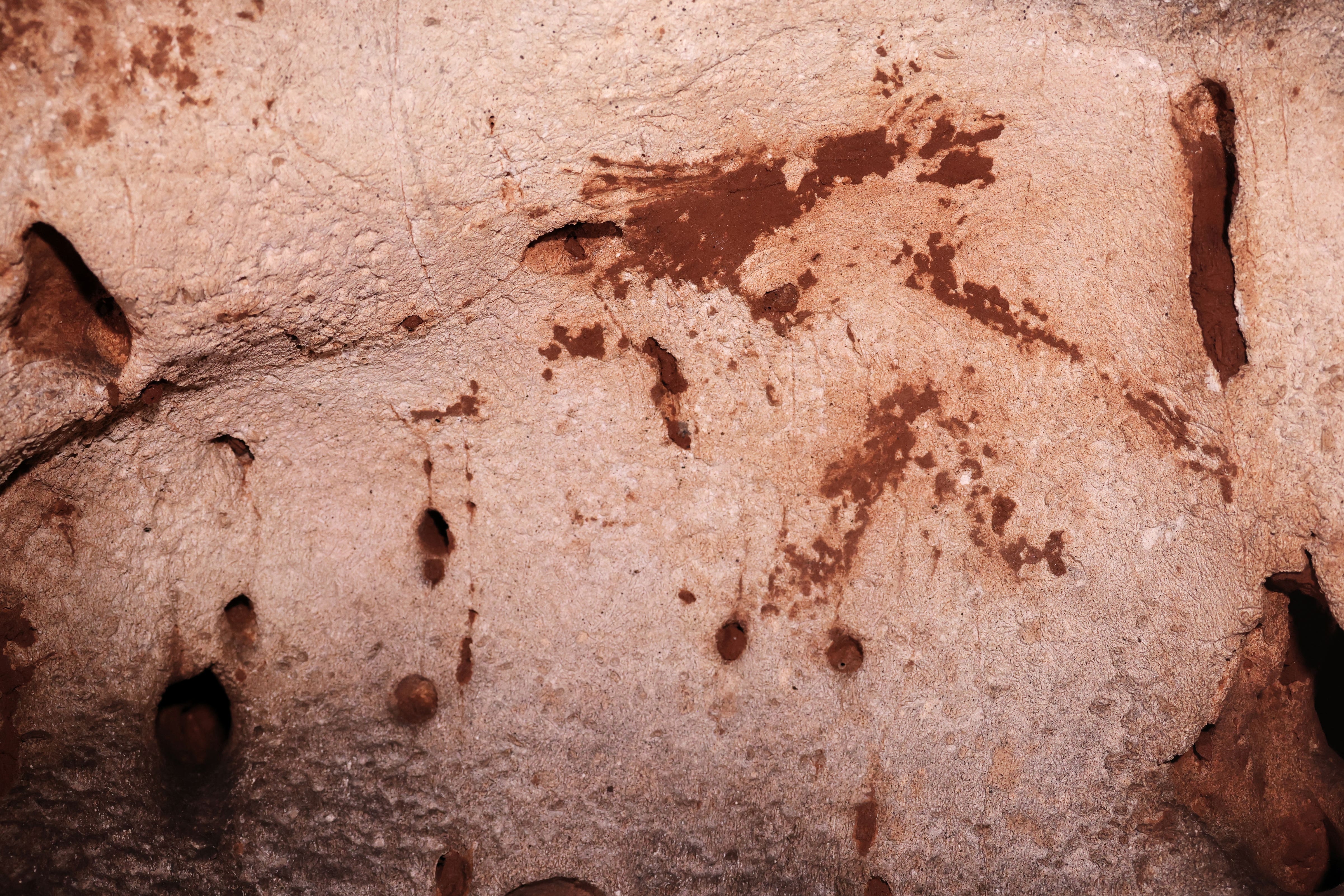Cave art dating back 24,000 years discovered in Spain
More than 100 palaeolithic paintings and engravings were found in the Cova Dones, or Cueva Dones, in Millares, near Valencia.

Your support helps us to tell the story
From reproductive rights to climate change to Big Tech, The Independent is on the ground when the story is developing. Whether it's investigating the financials of Elon Musk's pro-Trump PAC or producing our latest documentary, 'The A Word', which shines a light on the American women fighting for reproductive rights, we know how important it is to parse out the facts from the messaging.
At such a critical moment in US history, we need reporters on the ground. Your donation allows us to keep sending journalists to speak to both sides of the story.
The Independent is trusted by Americans across the entire political spectrum. And unlike many other quality news outlets, we choose not to lock Americans out of our reporting and analysis with paywalls. We believe quality journalism should be available to everyone, paid for by those who can afford it.
Your support makes all the difference.Archaeologists from a UK university have discovered a major palaeolithic cave art site on the east coast of Spain, featuring depictions of horses, deer and wild bulls.
More than 100 ancient paintings and engravings thought to be at least 24,000 years old were found in the 1,600ft (500m) deep cave Cova Dones, or Cueva Dones, in Millares, near Valencia.
Although the site was well-known by locals and hikers, the paintings remained undiscovered until the find by the researchers from the universities of Zaragoza and Alicante, who are affiliated to the University of Southampton.
Dr Aitor Ruiz-Redondo, senior lecturer of prehistory at Zaragoza and Southampton, said: “When we saw the first painted auroch (extinct wild bull), we immediately acknowledged it was important.
“Although Spain is the country with largest number of palaeolithic cave art sites, most of them are concentrated in northern Spain. Eastern Iberia is an area where few of these sites have been documented so far.
“However, the actual shock of realising its significance came long after the first discovery.
“Once we began the proper systematic survey, we realised we were facing a major cave art site, like the ones that can be found elsewhere in Cantabrian Spain, southern France or Andalusia, but that totally lack in this territory.”
The scientists have documented more than 100 motifs for their research, which has been published in the journal Antiquity, with at least 19 confirmed animal representations, many having unusually been made using clay.
They believe the discovery, first made in June 2021, is the most important palaeolithic cave art site to have been found in the region with the greatest number of motifs discovered in Europe since Atxurra (Bizkaia) in 2015.
Dr Ruiz-Redondo said: “Animals and signs were depicted simply by dragging the fingers and palms covered with clay on the walls.
“The humid environment of the cave did the rest: the ‘paintings’ dried quite slowly, preventing parts of the clay from falling down rapidly, while other parts were covered by calcite layers, which preserved them until today.”
The researchers believe that more art will be found in the caves as their investigations continue.